THE Brooklyn Museum of Art is one of New York City’s showpieces. Part of the Grand Army Plaza complex that includes the Soldiers and Sailor’s Monument, the main branch of the Brooklyn Public Library, and the entrances to Prospect Park and the Brooklyn Botanic Garden, the Museum is a can’t miss weekend experience for NYer and tourist alike with a collection of over 1 million historic objects and artworks.
The Beaux-Arts building on Eastern Parkway designed by McKim, Mead and White, the dominant architectural firm of the time, was built from 1893 to 1915, opening in 1897. Its original grand staircase was removed in 1935, but a new one was added along with a new entrance plaza in early 2004.
At the same time the new front entrance was opening, the Museum was reinstalling the Freda Schiff Warburg Sculpture Garden at the back entrance. The garden will include bits and oddments of architecture from demolished buildings of NYC, most from the classic Beaux-Arts period between 1890 and 1910. The Museum also donated dozens of small items like keystones, plaques and lunettes to adorn the IRT Eastern Parkway/Brooklyn Museum stop.

Among the highlights of the Warburg garden is Adolph Weinman’s Night, one of the two female statues (along with Day and six stone eagles) that flanked the big clock at the 7th Avenue entrance of the classic Pennsylvania Station, which stood from 1910 to 1964. The Brooklyn Museum acquired Night soon after she was taken down.

Eventually, the pieces in the Warburg garden will be labelled, but in 2004, not many were yet. This was one of the few: these Art Deco stone horses are from a pumping station on Neptune Avenue and West 23rd Street in Coney Island.

No label yet, but what are those two guys on either end reaching for?

The exuberant architectural spirit of the 1890-1910 Beaux-Arts period gave stonemasons free rein to do what they wanted in a classical context. The Greek image of the boy on a dolphin (in Greek mythology, Taras, the son of the Greek sea god Poseidon, was rescued from a shipwreck by a dolphin sent by his father) is represented here. Should the dolphin have two heads and scales? Why not?

Michigan football players, Vikings (both Hagar-type and football-type), Hermes, and Perseus have winged helmets.

Beaux-Arts stonecutters had no problems mixing Greek myths with Christian beliefs, sometimes on the same building. Here, a pair of cherubs flutter around with what appears to be the Ten Commandments tablets surrounded by a wreath.
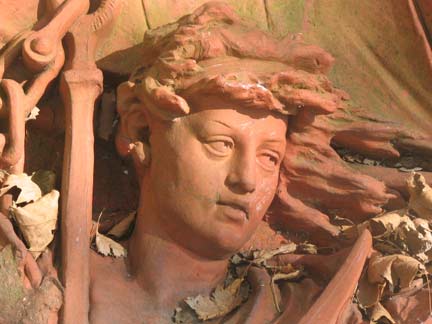

Two terra cotta Muses, female entities presiding over arts and sciences. In art, to tell them apart, they are often depicted with the field they were associated with; the top photo likely shows Urania, “the heavenly” Muse of astronomy, which in ancient times encompassed astrology, and the various arts, sciences and religious practices related to metaphysics, divination and psychology. The bottom is likely Euterpe, “giver of joy,” who plays the flute and is the Muse of lyric poetry and music. Artists often took liberties and showed different instruments.

As of summer 2004, the Warburg garden is fairly small with just a few unlabelled pieces. The real action can be found in the parking lot out in back, where hundreds of forgotten sculptures sit in the rain waiting for installation, if they are to be installed at all.

The lot is full of terra cotta and stone entablatures and portraits of historic and classical figures pulled from now-demolished buildings. There’s Rutherford B. Hayes, or is it Sigmund Freud, next to a now-discontinued form of fire hydrant.


I had been tipped by “Newyorkologist” Amy Langfield that Little Liberty was reposing in the sculpture yard. Little Liberty, a 37-foot high near-replica (including pedestal) of the original Lady Liberty was built in 1902 by William Flatteau in Akron, OH and shipped to NYC, where it topped the Liberty Warehouse on West 64th Street near Broadway for almost a century. The warehouse was demolished in 2002.
After languishing under wraps for a couple of years Little Liberty has found a new pedestal (November 2005), though she still awaits renovation and recladding. photo courtesy Sally Williams, Public Information Officer, Brooklyn Museum


They lie in wait, ever ready to return and wreak havoc on the world they once dominated.

This one makes me think of Chipmunk-creatorRoss Bagdasarian (whose stage name was David Seville)’s 1958 hit “Bird on My Head“. Before creating the Chipmunks Ross had the odd pop hit and appeared in Alfred Hitchcock’s “Rear Window.” “Bird on My Head” is a surprisingly up tempo number with a yackety sax.

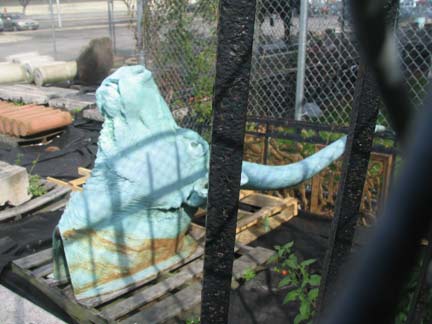
I need a terra cotta Caesar head on a platter pronto and that’s no bull.

A torso…

..and even more so.
Let’s hear it for the girls.
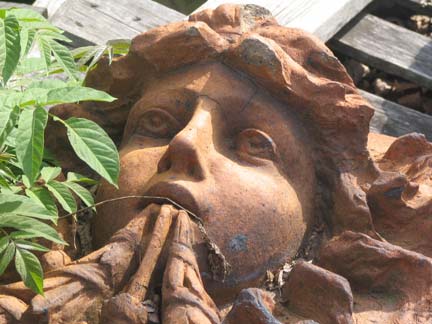
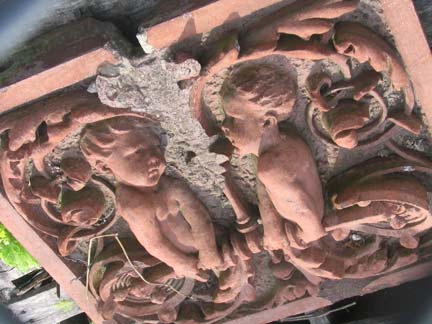
The legend of the Green Man, the fertility and nature personification that goes back to the pagan period and even earlier, is represented in sculpture by human figures that seem to be one with the plants; some figures have shoots and leaves (but no eats) springing from their mouths, while some Green Men cherubs have stalks instead of legs.
http://www.youtube.com/watch?v=hbhQURN9Szw
This Neptune-thing with the trident, chains, scaly fish things, etc. is engaging enough but it wasn’t till I looked carefully that I saw the robin flying at the top of the picture.

I’m not sure all these sculptures will make it to the Warburg garden. They share space with lamppost reproductions, old fire hydrants and fire alarms, so it’s possible a larger space will be created near the parking lot. I’m glad the Brooklyn Museum has them, since, well, they don’t make buildings like this any more…
9/26/04

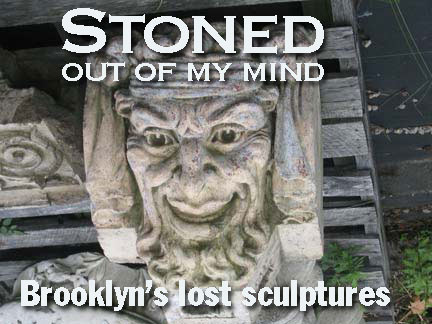
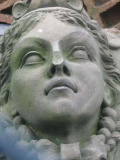

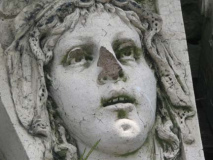
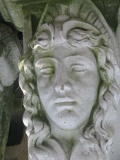
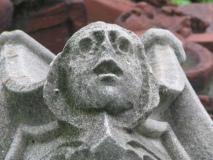

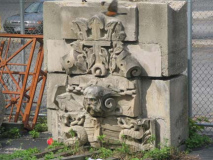

2 comments
I modelled a horsehead keystone after that red terracotta pictured here, though I added a cornice on top to protect the ears, seems every one of these horse head sculptures I’ve seen the ears are broken off or damaged, the one at the museum has obviously been repaired.
http://i.imgur.com/7ZTFsj3.jpg
Cherubim are not from Greek mythology. They are a type of angel mentioned in the Bible and the word Cherub is from Hebrew.